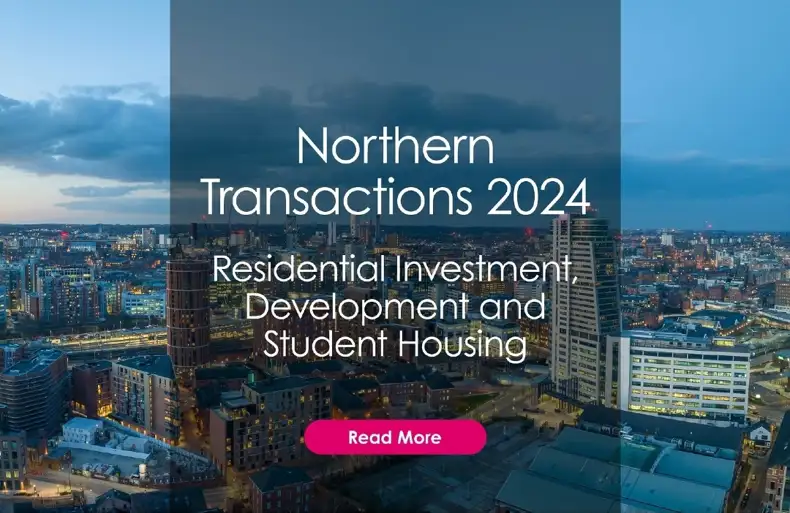Reform in its early days
The shake-up of permitted development rights in 2013 has allowed people to extend their homes and create new spaces in existing buildings, such as offices and shops, in order to speed up the construction of new homes. The amended General Permitted Development Order saw an extraordinary take-up by developers, with the most widely utilised amendment being the ability to change a building’s use from office to residential.

Two years later, the government announced that permitted development rights to convert offices to residential would be made permanent, while giving local planning authorities the power to remove permitted development rights in their respective geographical area via Article 4 Directions, thus providing them with a greater degree of control and requiring developers to go through the standard planning permission process.
Since 2013, a variety of Permitted Development (PD) schemes have been brought forward, many of which are good-quality conversions, however, a number of newly converted properties have been deemed substandard due to their small size and the lack of natural light. This led the government to introduce a further requirement, announced in 2020, for all new PD schemes to provide adequate natural light and comply with minimum space standards set at a national level.
According to those rules, the gross internal area of any new home can be no smaller than 37 square metres. This will apply to any application submitted on or after 6 April 2021.
These announcements have been welcomed by many and arguably help ensure a certain standard of stock is maintained while providing a degree of control to local planning authorities in key geographical areas.
Moving forward
One of the key planning changes brought about in 2020 was the creation of a new learning and non-residential institutions class – Class F1 – and a new commercial, business and service class – Class E.
This simplification of use classes is arguably one of the first government attempts to modernise the planning system to better respond to the current socio-economic challenges, which have been exacerbated by the Covid pandemic and it provides more flexibility for both landlords and tenants, helping reduce vacancy rates in our towns.

However, a key change for 2021 is the government’s proposals for further changes to PD rights, allowing one to convert the new E-Class buildings to C3 Residential, under a new ‘class MA’. The consultation ended on 28 January 2021, and the outcome of certain elements of that consultation were published on 31 March 2021.
There are a number of implications of this change, the most immediate of which is the ‘window of opportunity’ created until 1 August 2021. The existing right under ‘class O’ to convert an office of unlimited size to residential will terminate on 31 July 2021. From this date onwards a conversion under PD will have to be done under the new ‘class MA’ which has a maximum limit of 1,500sqm (16,146 sqft) per building.
It appears clear that the era of converting large office buildings via permitted development is now coming to an end and there is a very limited ‘window of opportunity’ for landowners and developers to submit permitted development applications with no size limit under the existing rules.
Key clarifications from the consultation include;
- Existing PD rights ‘class O’ and ‘class M’ (office to resi and retail to resi) will end on 31 July 2021
- Expansion of rights under new ‘class MA’ to include the whole of E use class (shops, offices, restaurant, café’s, health services, nurseries, gyms and leisure) comes into effect on 1 August 2021
- Size Limit of 1,500sqm (16,146 sqft) has now been imposed, a significant variation on the previous no limit for offices.
- The introduction of a three month vacancy period prior to the date of application (excluding Covid related vacancy)
- Correct ‘class E’ usage for two years
- Consideration around the potential loss of health centre and nurseries on the provision of local services
- Applicable with conservation areas
- Fee of between £100 – £5,000 per new home may be applicable
While the new legislation is due to come into effect from 1 August 2021. In an attempt to protect the Article 4 Directions the legislation will carry over any existing Article 4 Directions relating to office to residential conversions until 31 July 2022. Article 4 Directions have been put in place in almost 20% of local authorities in England, including 20 London boroughs and are costly and require consultation and notice periods. Therefore while this protection for the first year allows councils who wish to preserve these directions sufficient time to do so, they will need to act quickly and decisively.
This, combined with the proposed changes to the National Planning Policy Framework, according to certain experts, is likely to make it significantly harder for local authorities to obtain Article 4 Directions going forward which may also create some interesting opportunities in locations which were previously protected.
For further information the governments explanatory memorandum in relation to the changes can be found HERE along with it’s own press release HERE
If you have a property and would like to discuss the potential implications of upcoming changes, then please do not hesitate to get in touch with either myself or one of my colleagues.




